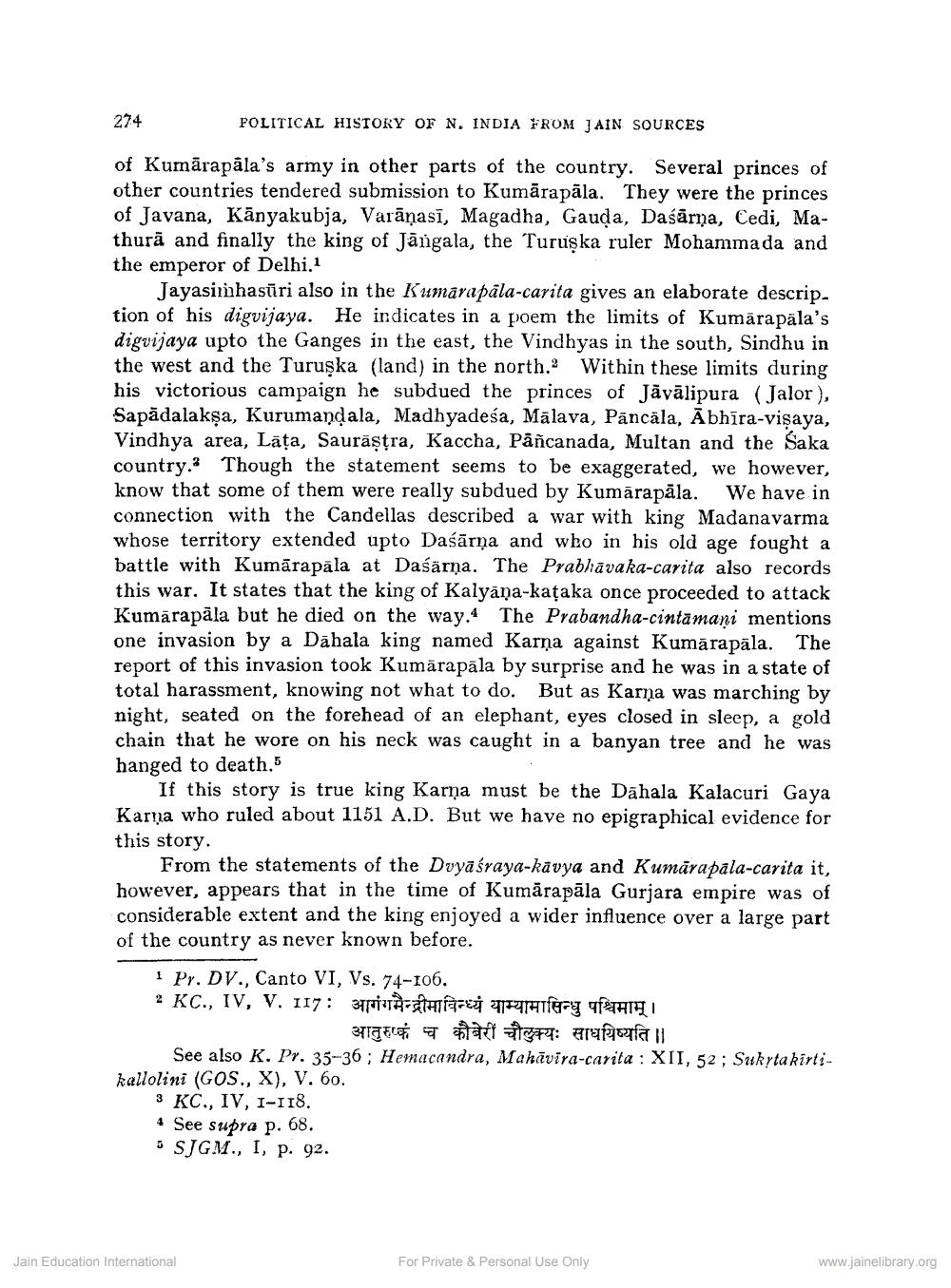________________
274
POLITICAL HISTORY OF N. INDIA FROM JAIN SOURCES
of Kumarapala's army in other parts of the country. Several princes of other countries tendered submission to Kumarapala. They were the princes of Javana, Kanyakubja, Varanasi, Magadha, Gauda, Daśārna, Cedi, Mathura and finally the king of Jangala, the Turuşka ruler Mohammada and the emperor of Delhi.1
Jayasininhasüri also in the Kumarapala-carita gives an elaborate descrip. tion of his digvijaya. He indicates in a poem the limits of Kumarapala's digvijaya upto the Ganges in the east, the Vindhyas in the south, Sindhu in the west and the Turuşka (land) in the north. Within these limits during his victorious campaign he subdued the princes of Jävälipura (Jalor). Sapädalakṣa, Kurumandala, Madhyadeśa, Malava, Pancala, Abhira-visaya, Vindhya area, Lața, Sauraṣṭra, Kaccha, Pañcanada, Multan and the Saka country. Though the statement seems to be exaggerated, we however, know that some of them were really subdued by Kumarapala. We have in connection with the Candellas described a war with king Madanavarma whose territory extended upto Daśārņa and who in his old age fought a battle with Kumarapala at Daśärna. The Prabhavaka-carita also records. this war. It states that the king of Kalyana-kataka once proceeded to attack Kumarapala but he died on the way. The Prabandha-cintamani mentions. one invasion by a Dahala king named Karna against Kumarapala. The report of this invasion took Kumarapala by surprise and he was in a state of total harassment, knowing not what to do. But as Karna was marching by night, seated on the forehead of an elephant, eyes closed in sleep, a gold chain that he wore on his neck was caught in a banyan tree and he was hanged to death.
If this story is true king Karma must be the Dahala Kalacuri Gaya Karya who ruled about 1151 A.D. But we have no epigraphical evidence for this story.
From the statements of the Dvyasraya-kavya and Kumarapala-carita it, however, appears that in the time of Kumārapäla Gurjara empire was of considerable extent and the king enjoyed a wider influence over a large part of the country as never known before.
1 Pr. DV., Canto VI, Vs. 74-106.
* KC, IV, V. 117
2
See also K. Pr. 35-36; Hemacandra, Mahavira-carita: XII, 52; Sukṛtakirtikallolini (GOS., X), V. 60.
3 KC., IV, 1-118.
5
See supra p. 68. SJGM., I, p. 92.
आगंगमैन्द्रीमा विन्ध्यं याम्यामासिन्धु पश्चिमाम् ।
आनुरुकं च कीबेरी चौलुक्यः साधयिष्यति ||
Jain Education International
For Private & Personal Use Only
www.jainelibrary.org




